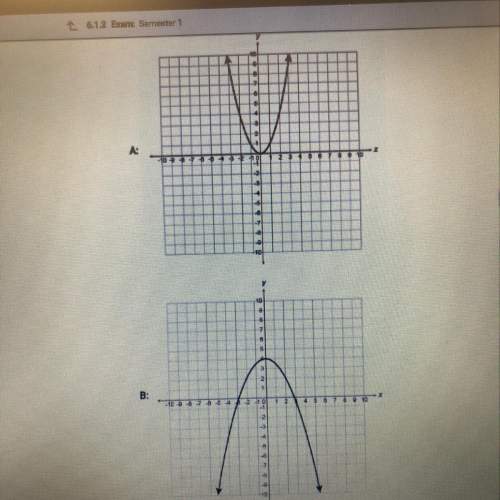
Mathematics, 05.07.2021 20:00 milkcap1
The Statistical Abstract of the United States published by the U. S. Census Bureau reports that the average annual consumption of fresh fruit per person is 99.9 pounds. The standard deviation of fresh fruit consumption is about 30 pounds. Suppose a researcher took a random sample of 38 people and had them keep a record of the fresh fruit they ate for one year.
Appendix A Statistical Tables
(Round all z values to 2 decimal places. Round your answers to 4 decimal places.)
a. What is the probability that the sample average would be less than 90 pounds?
p =
b. What is the probability that the sample average would be between 98 and 105 pounds?
p =
c. What is the probability that the sample average would be less than 112 pounds?
p =
d. What is the probability that the sample average would be between 93 and 96 pounds?
p =

Answers: 2
Another question on Mathematics

Mathematics, 21.06.2019 13:00
Acar traveling at 65 mph leaves 25 foot skid mark what is the ratio of the speed to length of skid mark (feet) in the simplest form
Answers: 1

Mathematics, 21.06.2019 17:30
Determine the number of girls in a math class with 87 boys if there are 25 girls for every 75 boys
Answers: 2

Mathematics, 21.06.2019 22:00
If i had 1234 apples and 1 banana what is the total amount
Answers: 2

Mathematics, 22.06.2019 03:00
In this problem, we explore the effect on the standard deviation of multiplying each data value in a data set by the same constant. consider the data set 14, 6, 8, 15, 15. (a) use the defining formula, the computation formula, or a calculator to compute s. (round your answer to one decimal place.) s = 4.28 (b) multiply each data value by 3 to obtain the new data set 42, 18, 24, 45, 45. compute s. (round your answer to one decimal place.) s = 12.83 (c) compare the results of parts (a) and (b). in general, how does the standard deviation change if each data value is multiplied by a constant c? multiplying each data value by the same constant c results in the standard deviation remaining the same. multiplying each data value by the same constant c results in the standard deviation being |c| times as large. multiplying each data value by the same constant c results in the standard deviation increasing by c units. multiplying each data value by the same constant c results in the standard deviation being |c| times smaller. (d) you recorded the weekly distances you bicycled in miles and computed the standard deviation to be s = 3.8 miles. your friend wants to know the standard deviation in kilometers. do you need to redo all the calculations? yes no given 1 mile ≠1.6 kilometers, what is the standard deviation in kilometers? (enter your answer to two decimal places.)
Answers: 1
You know the right answer?
The Statistical Abstract of the United States published by the U. S. Census Bureau reports that the...
Questions

Mathematics, 20.09.2020 22:01

History, 20.09.2020 22:01


English, 20.09.2020 22:01



Chemistry, 20.09.2020 22:01

Mathematics, 20.09.2020 22:01


Biology, 20.09.2020 22:01




Mathematics, 20.09.2020 22:01





English, 20.09.2020 22:01

Mathematics, 20.09.2020 22:01








